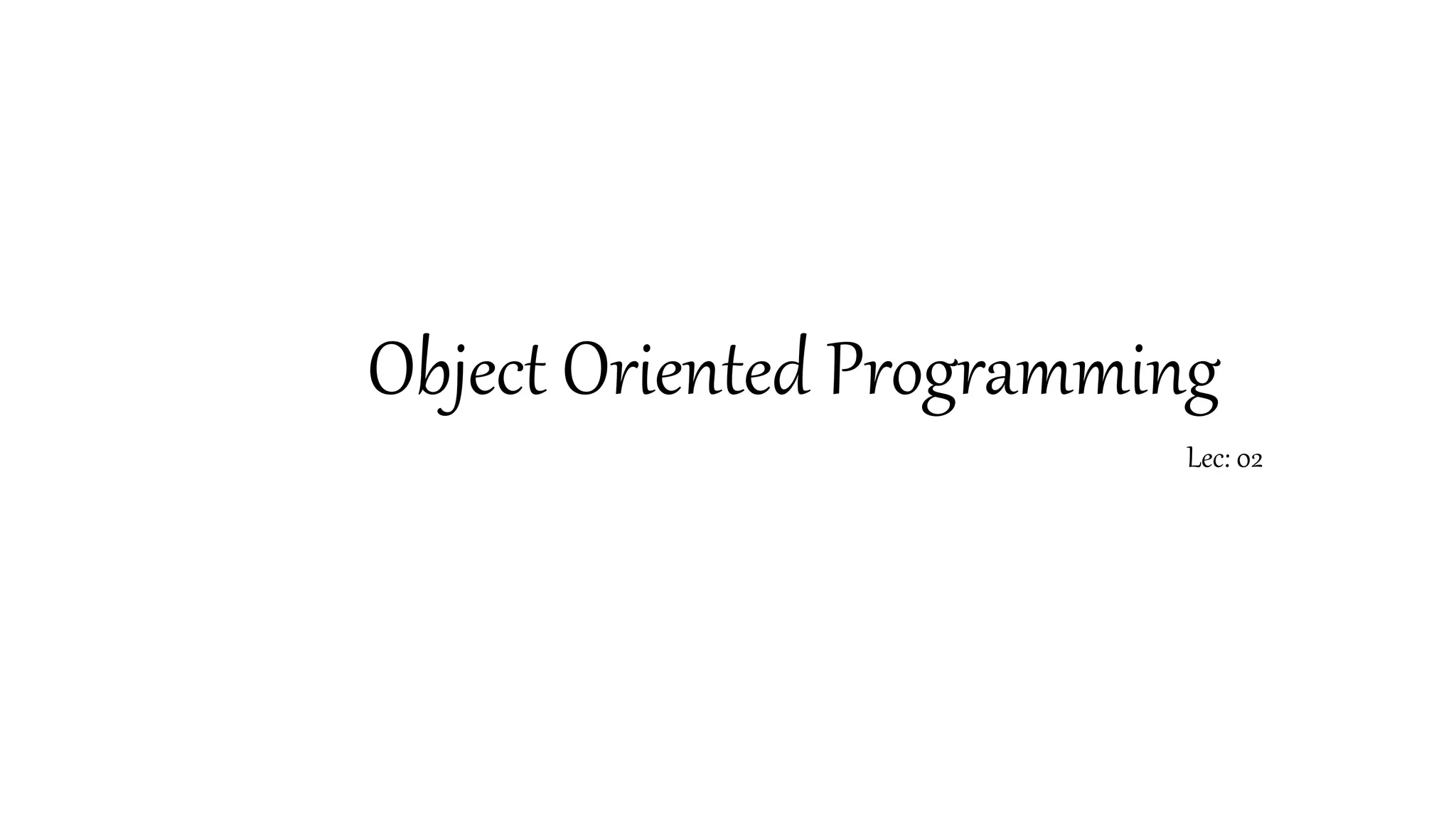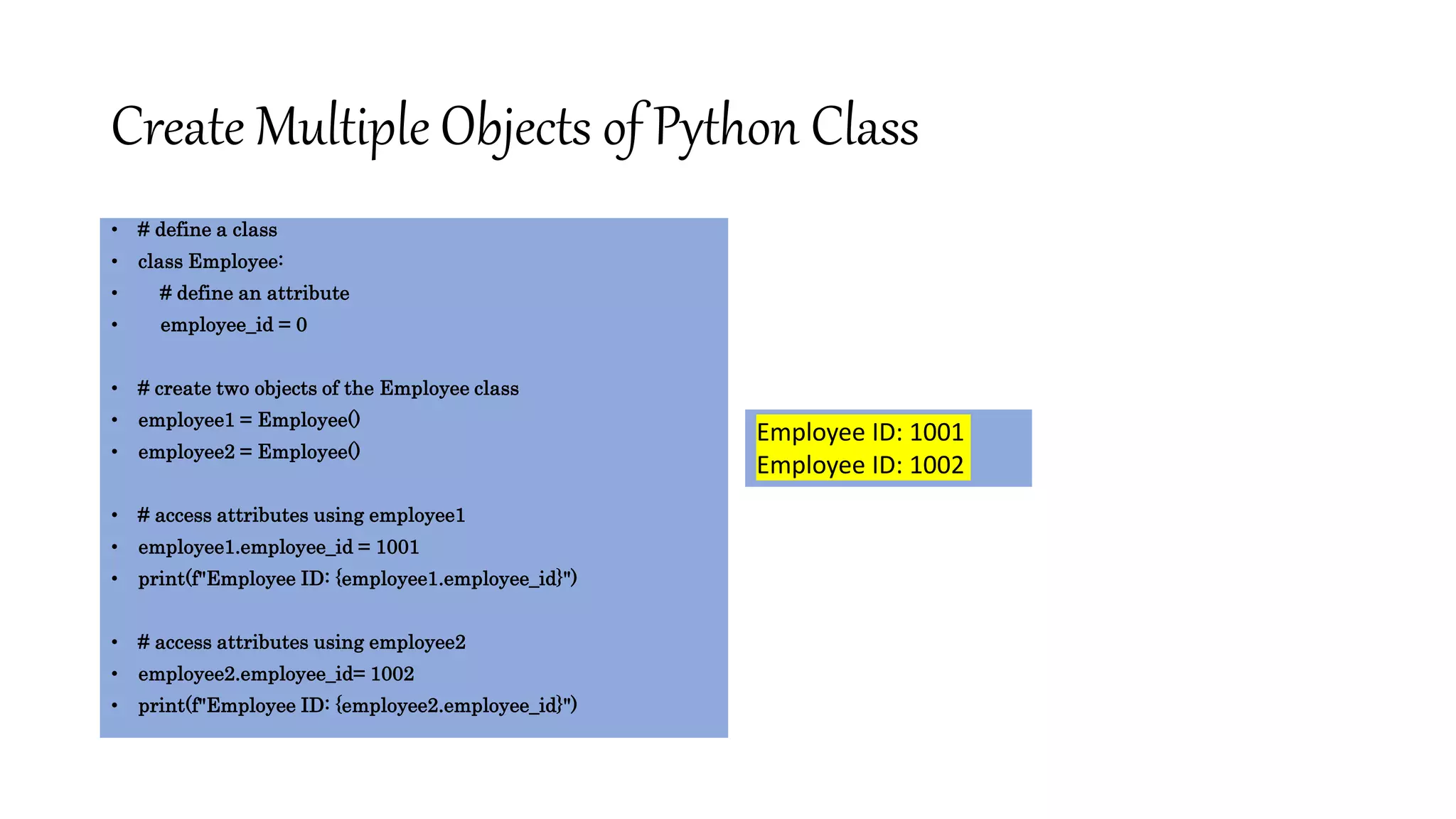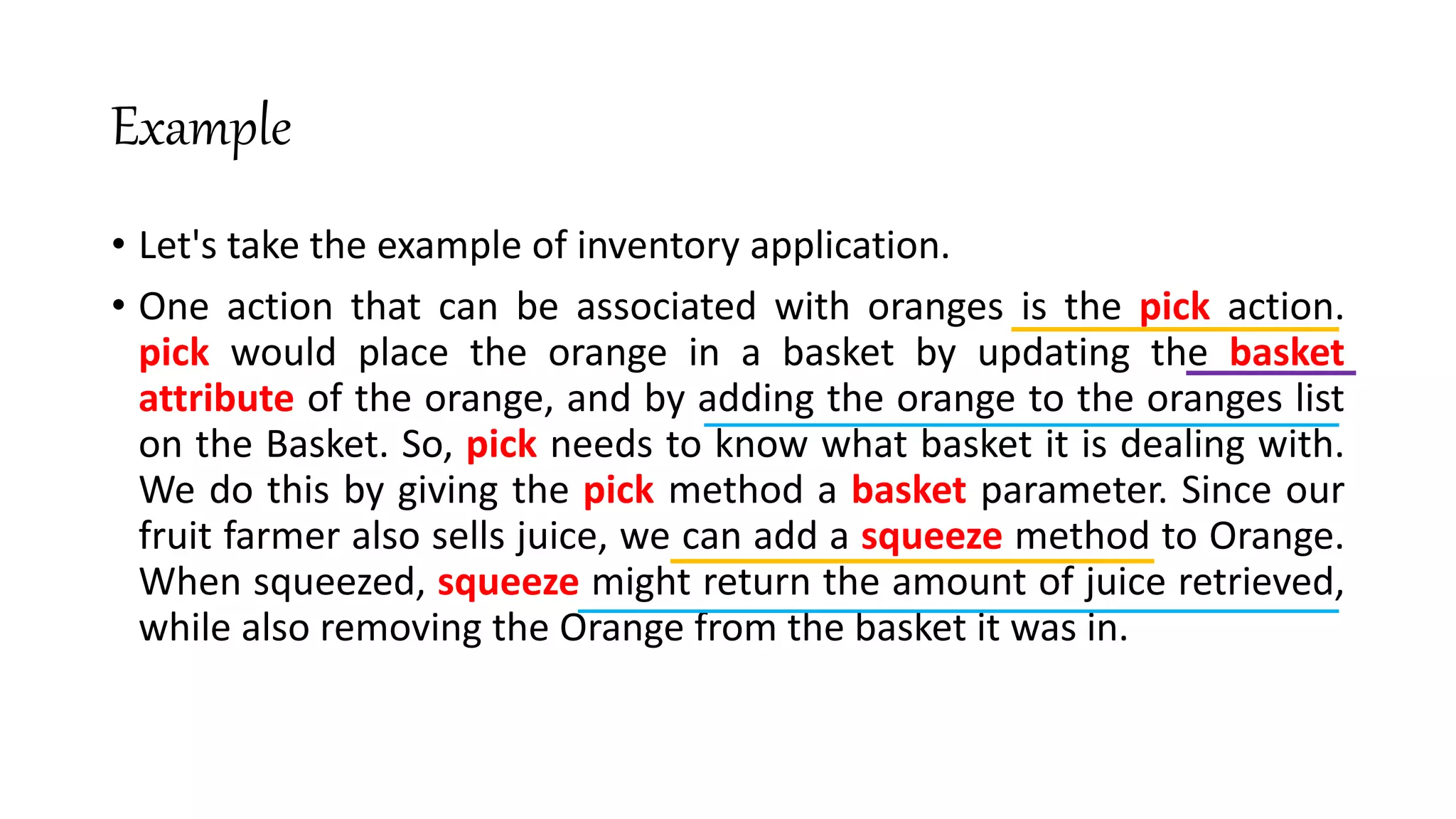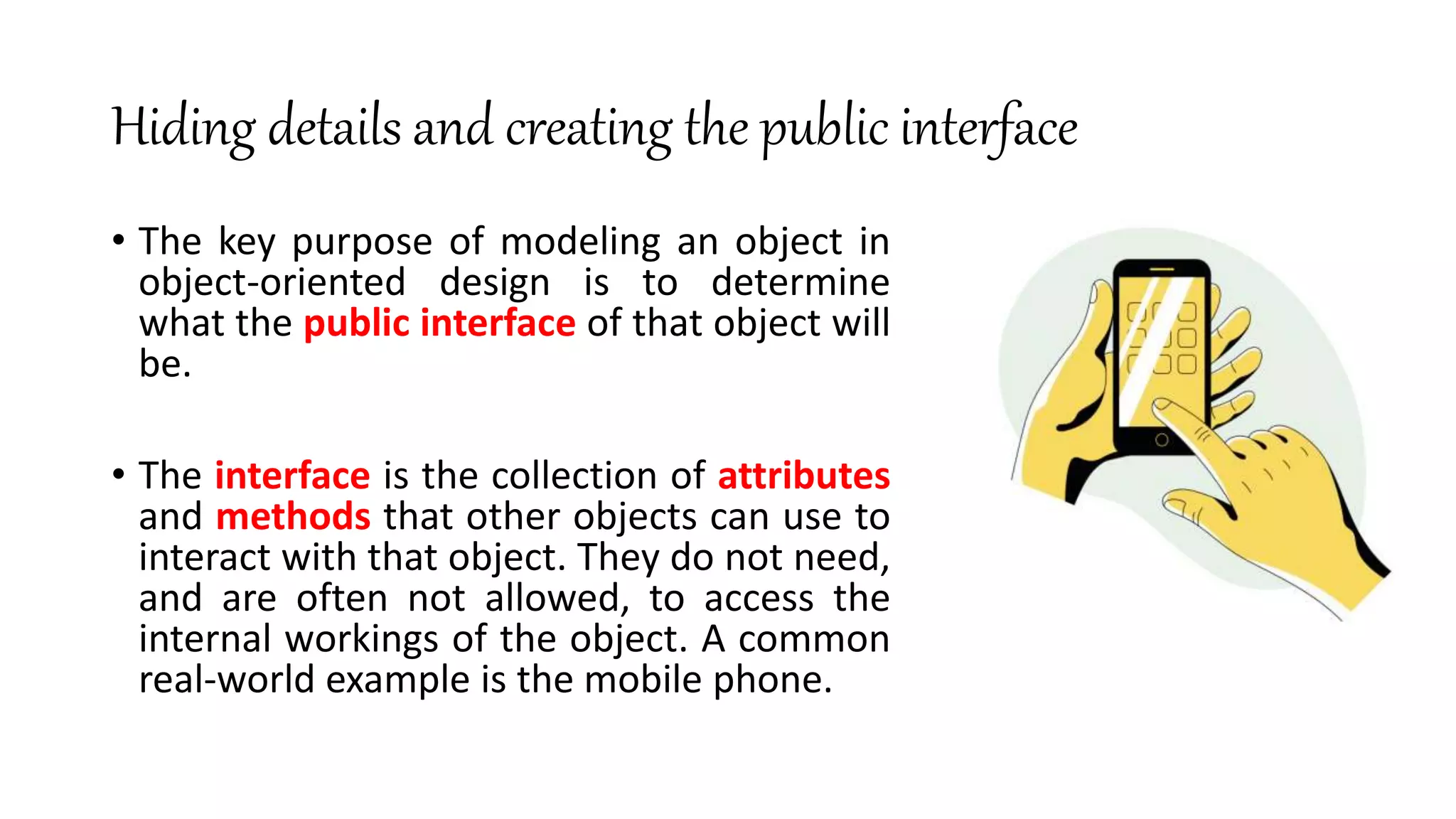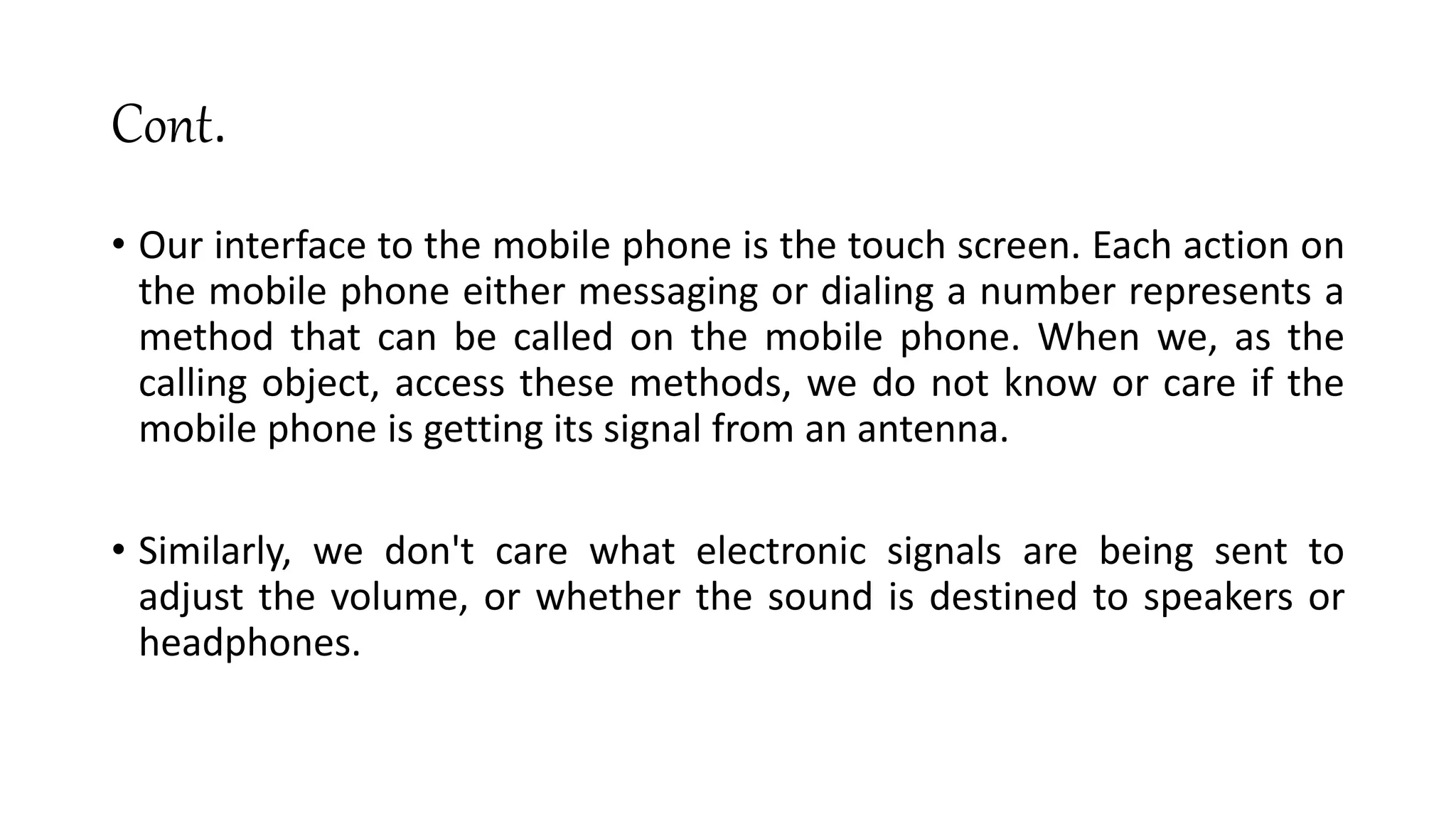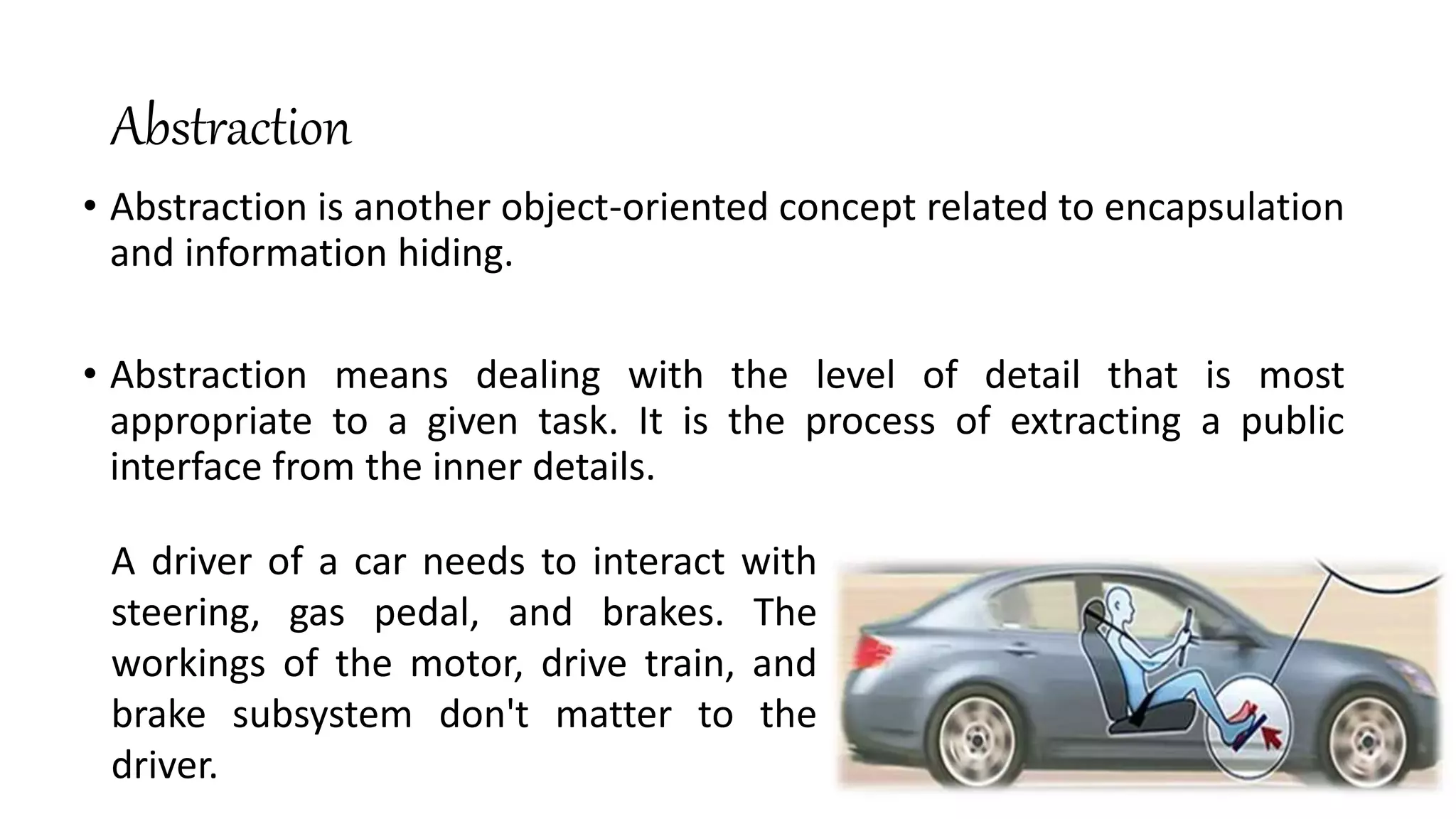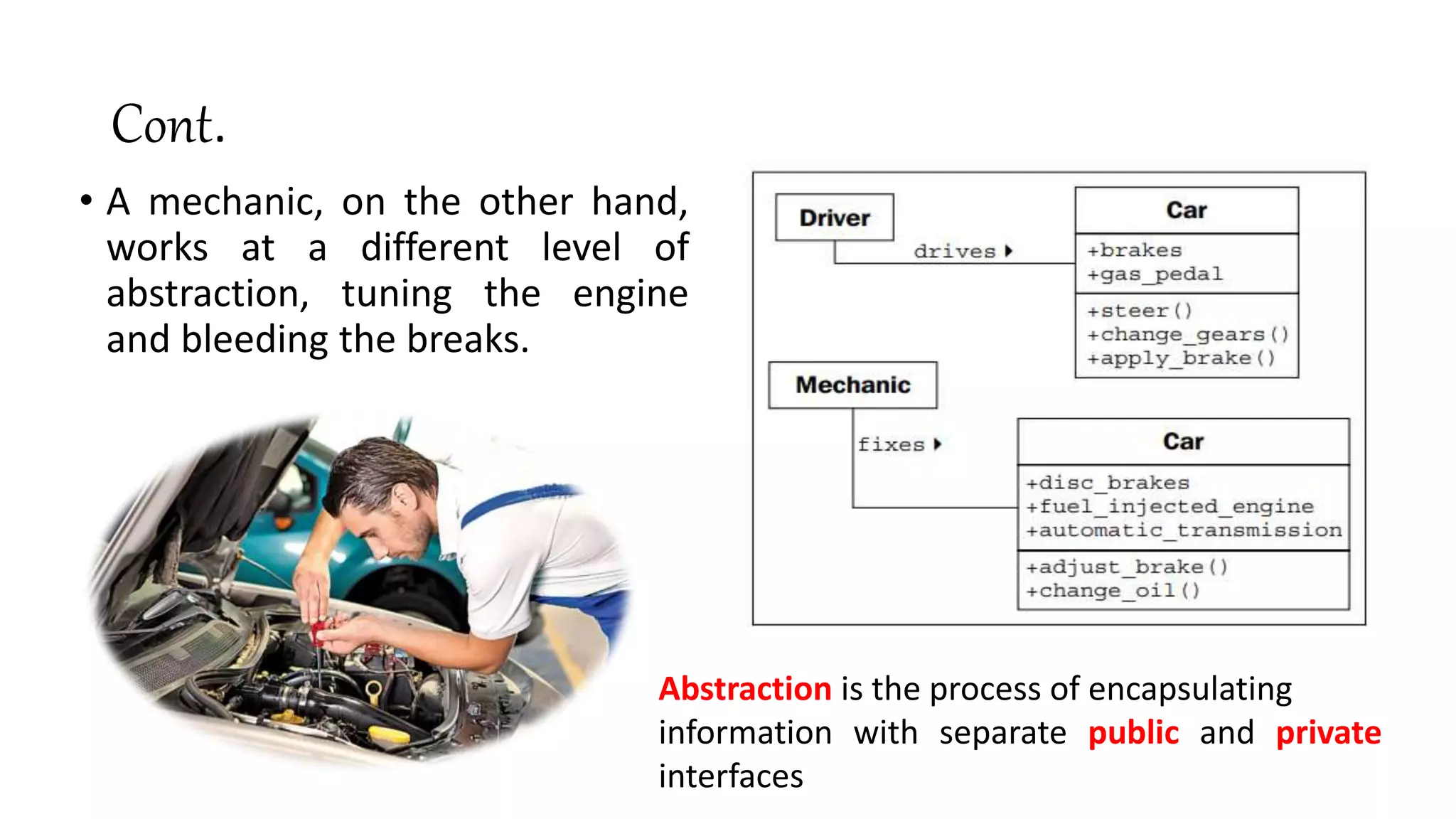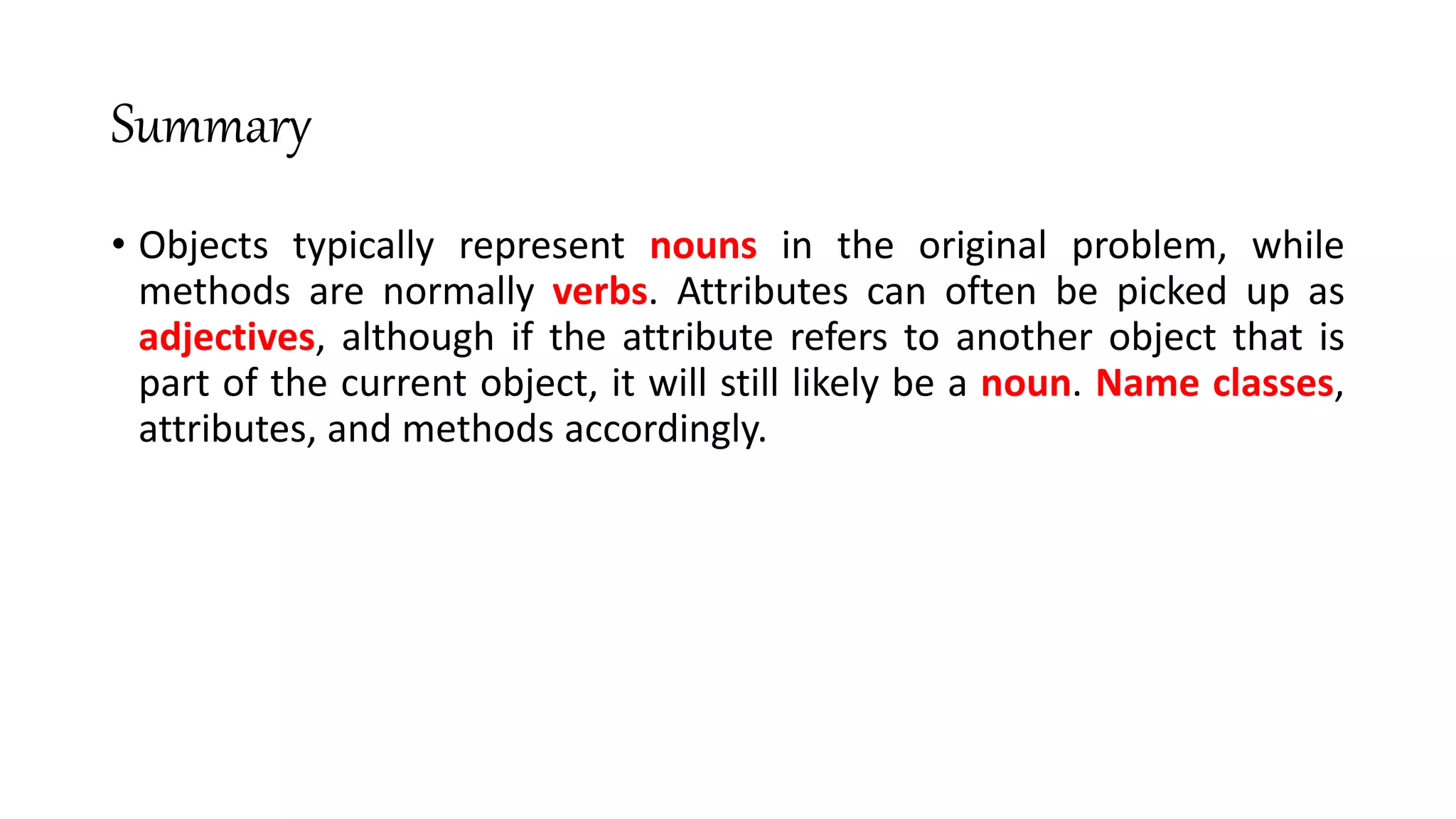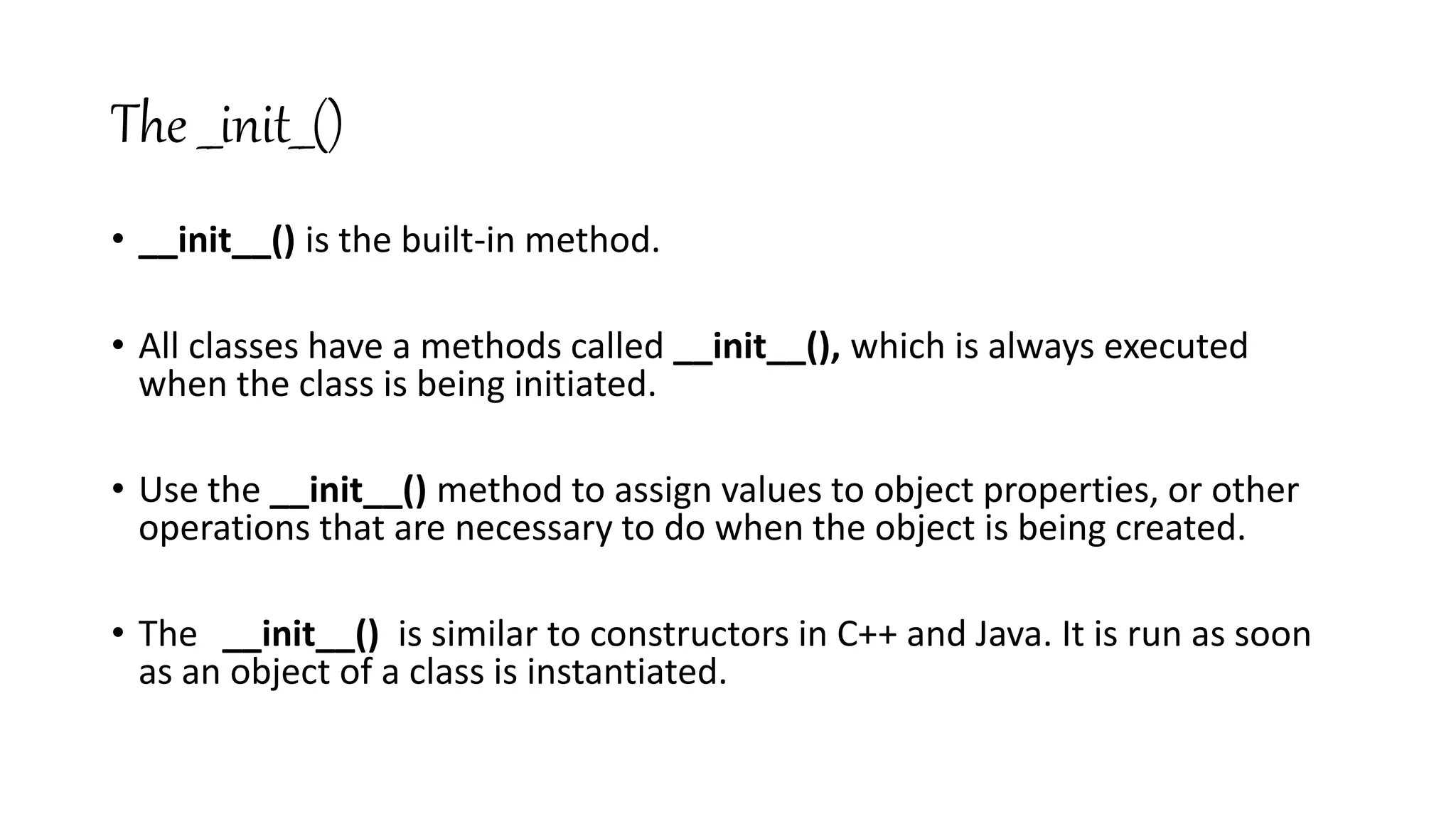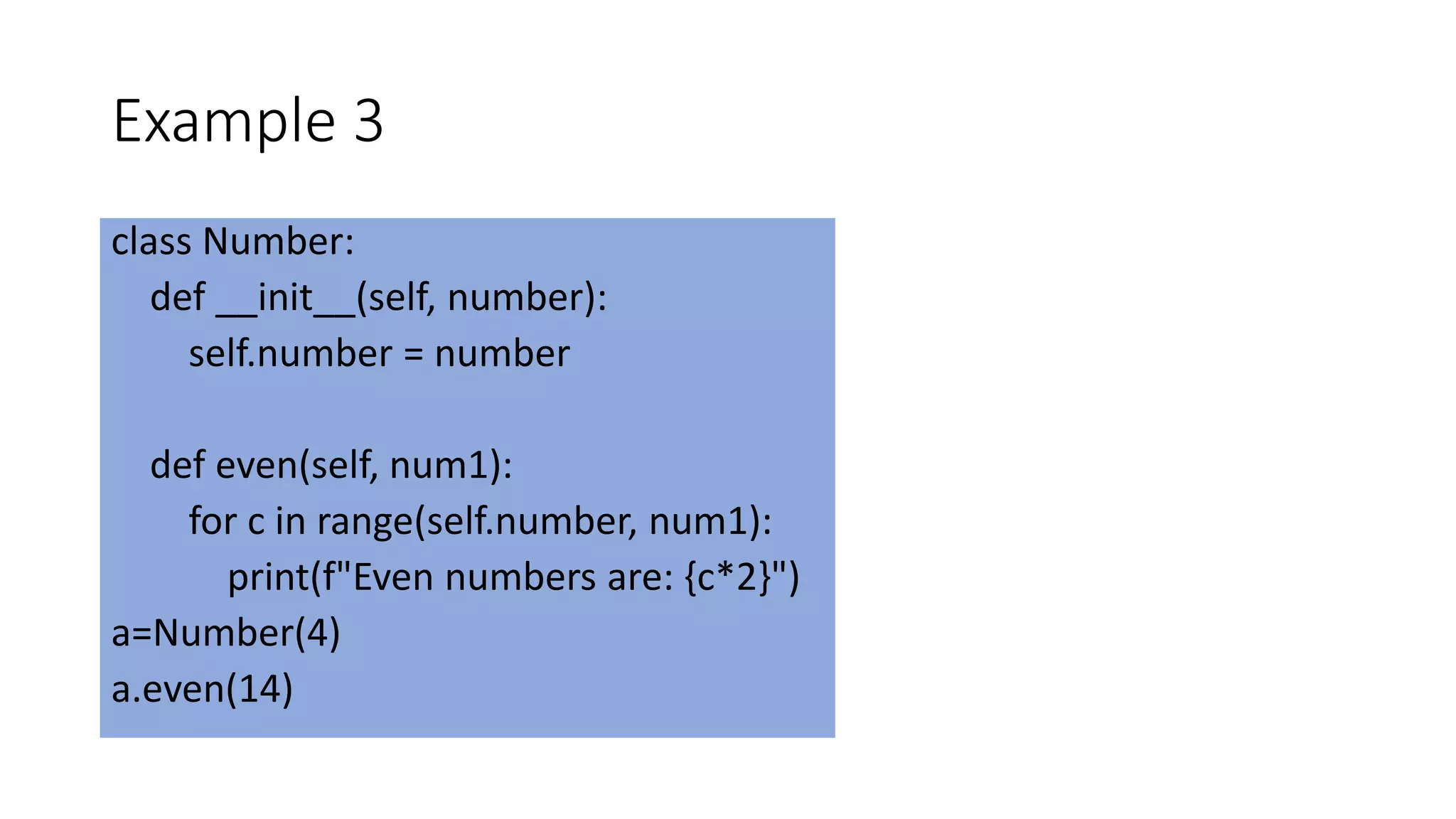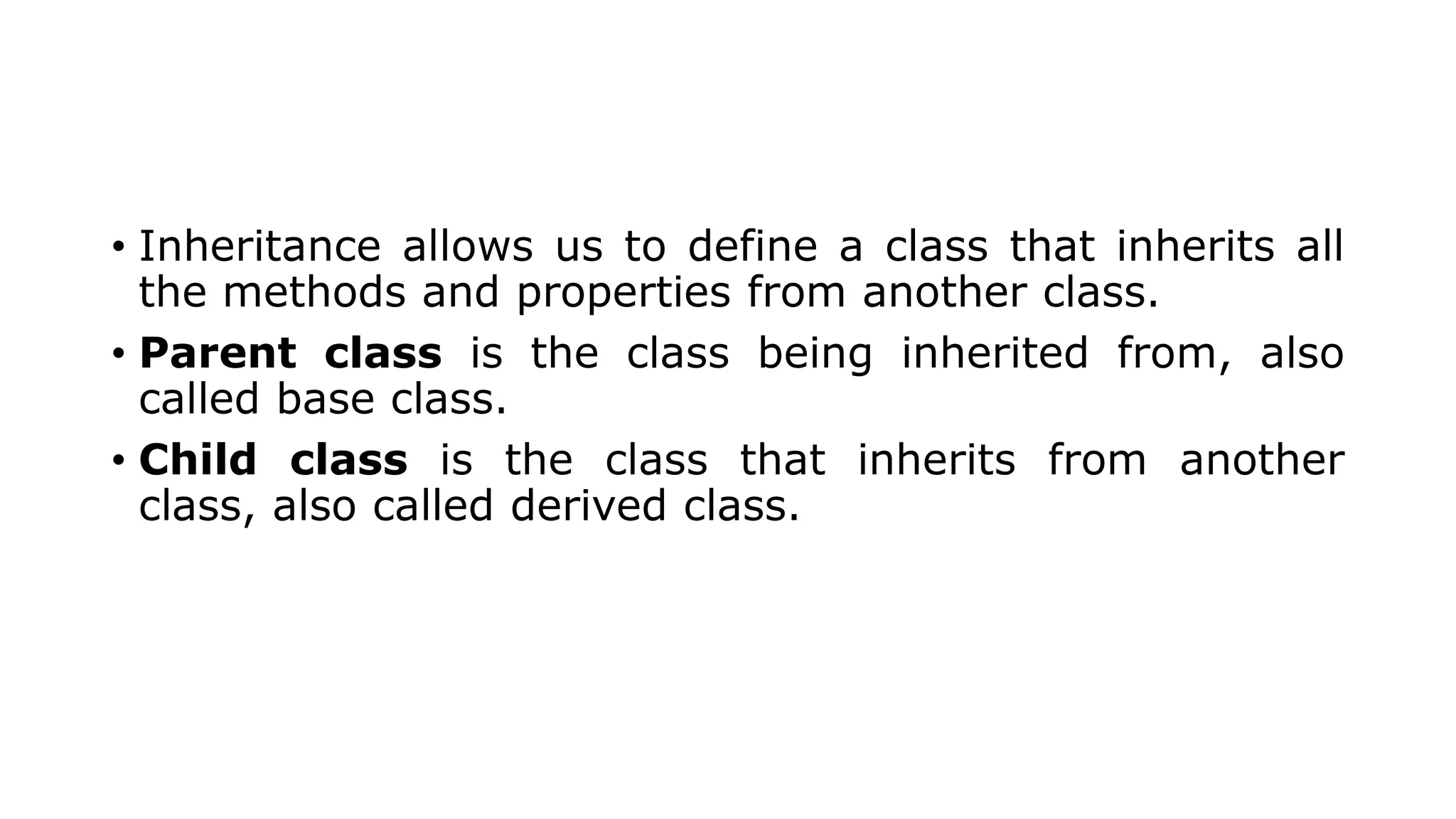The document discusses object-oriented programming concepts like classes, objects, methods, encapsulation, abstraction, and inheritance. It provides examples of defining classes with attributes and methods, creating objects, and accessing object properties and methods. Constructors (__init__()) are discussed as special methods that initialize objects. Encapsulation, information hiding, and abstraction are presented as key concepts for modeling real-world objects in code with public and private interfaces.
